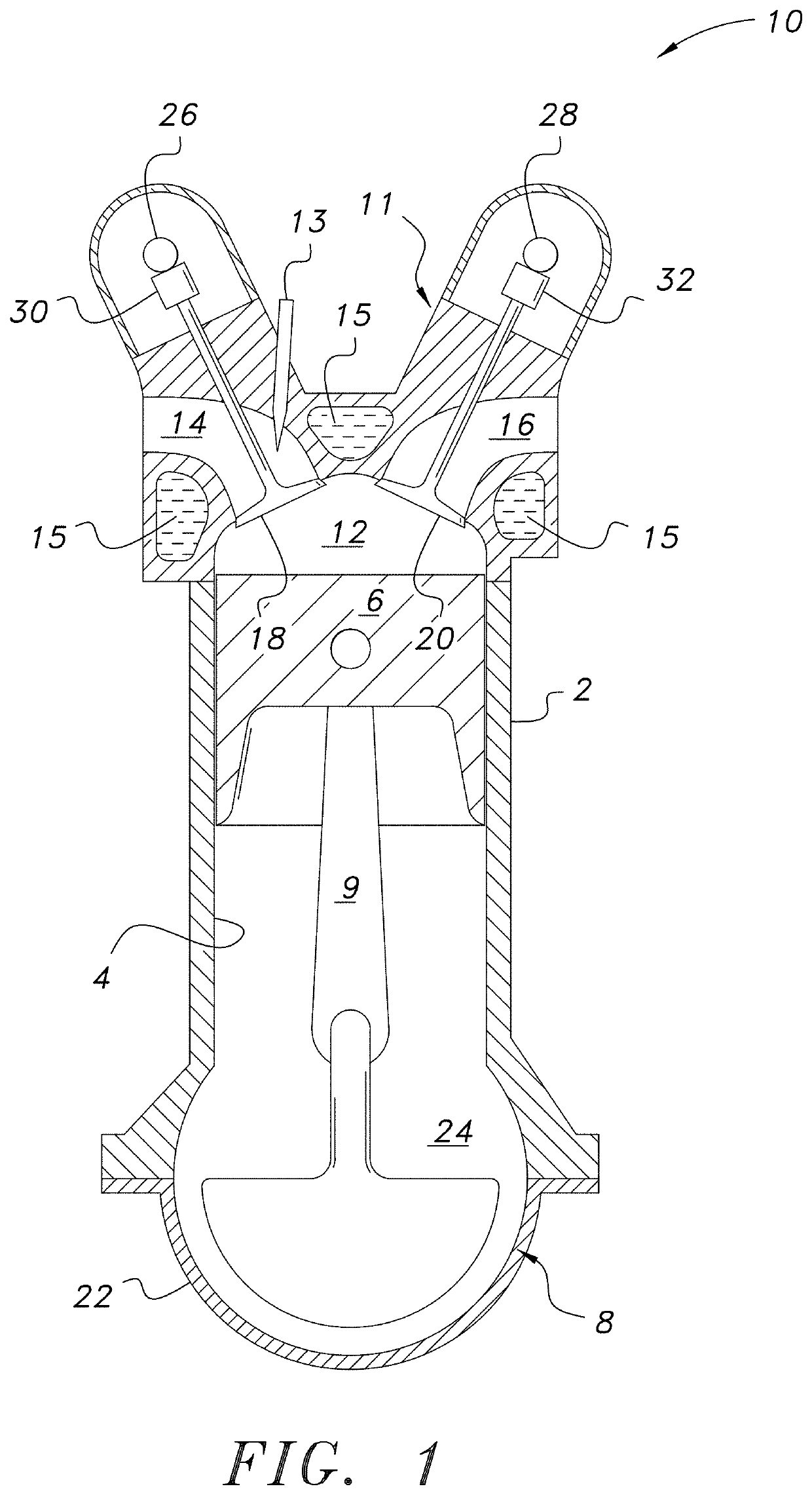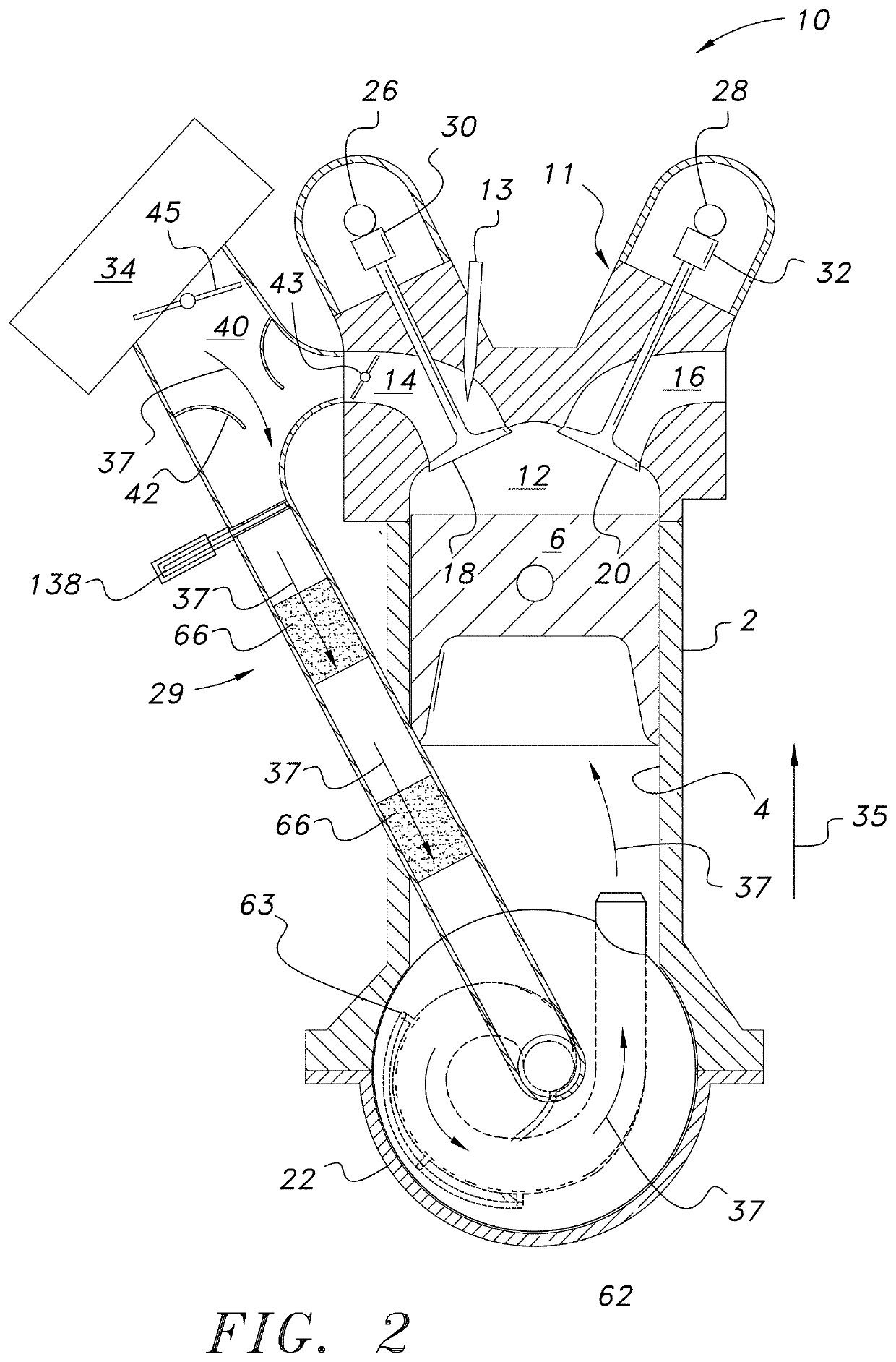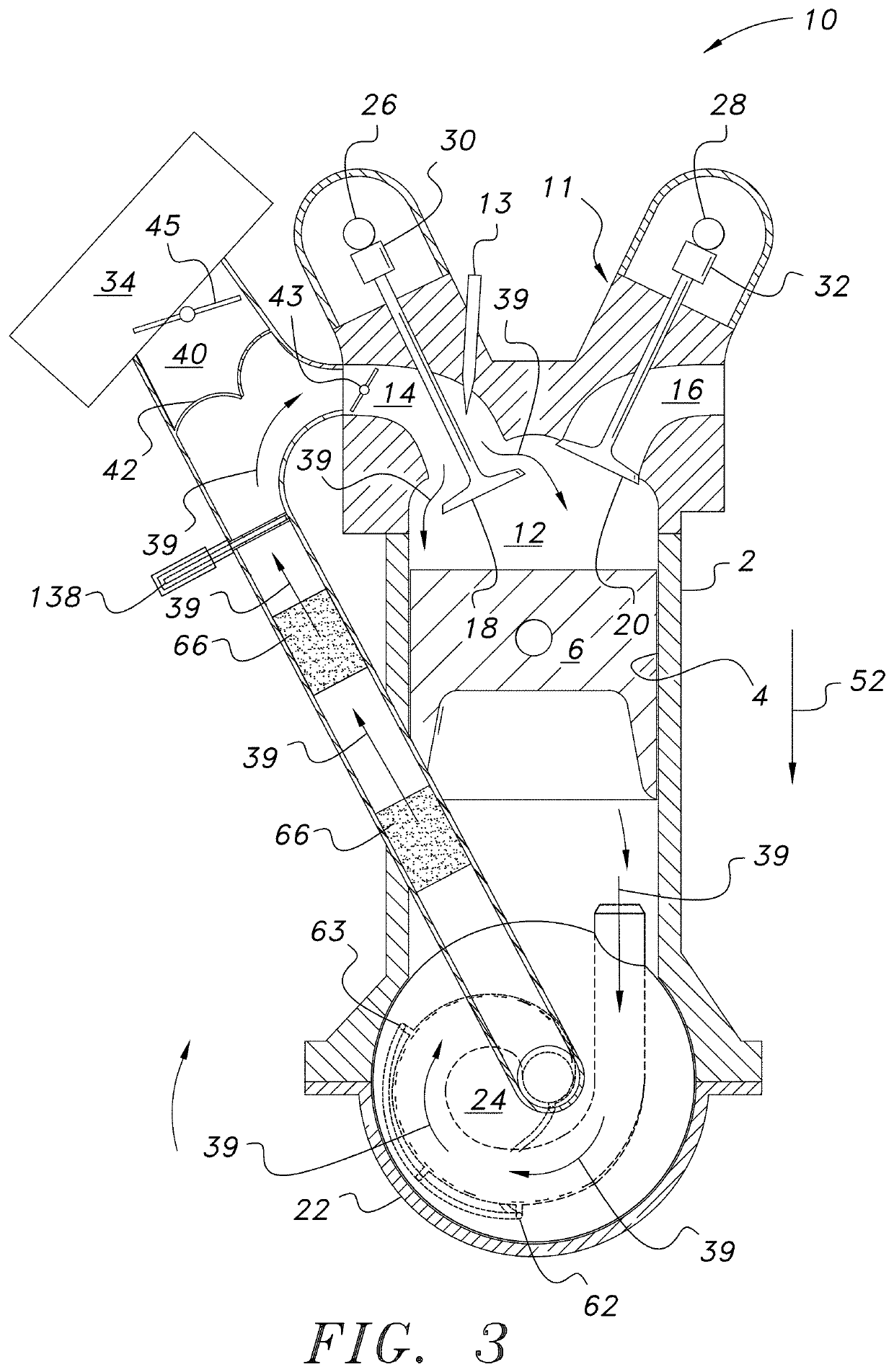Systems and methods of forced air induction in internal combustion engines
a technology of forced air induction and internal combustion engine, which is applied in the direction of combustion engine, crankcase ventillation, machine/engine, etc., can solve the problems of large engine weight, increased construction cost, and increased horsepower, and all such devices are generally fairly complex in design
- Summary
- Abstract
- Description
- Claims
- Application Information
AI Technical Summary
Benefits of technology
Problems solved by technology
Method used
Image
Examples
Embodiment Construction
[0048]As required, a detailed embodiment of the present inventive concept is disclosed herein; however, it is to be understood that the disclosed embodiment is merely exemplary of the principles of the inventive concept, which may be embodied in various forms. Therefore, specific structural and functional details disclosed herein are not to be interpreted as limiting, but merely as a basis for the claims and as a representative basis for teaching one skilled in the art to variously employ the present inventive concept in virtually any appropriately detailed structure.
[0049]It will be appreciated that the drawings included herein are intended for representative purposes only of the inventive concept, and therefore in some instances may not be shown to scale and / or may otherwise include representative depictions of components and / or their arrangements that may vary significantly from the respective component designs and / or arrangements included in three-dimensional models or manufactu...
PUM
 Login to View More
Login to View More Abstract
Description
Claims
Application Information
 Login to View More
Login to View More - R&D
- Intellectual Property
- Life Sciences
- Materials
- Tech Scout
- Unparalleled Data Quality
- Higher Quality Content
- 60% Fewer Hallucinations
Browse by: Latest US Patents, China's latest patents, Technical Efficacy Thesaurus, Application Domain, Technology Topic, Popular Technical Reports.
© 2025 PatSnap. All rights reserved.Legal|Privacy policy|Modern Slavery Act Transparency Statement|Sitemap|About US| Contact US: help@patsnap.com



